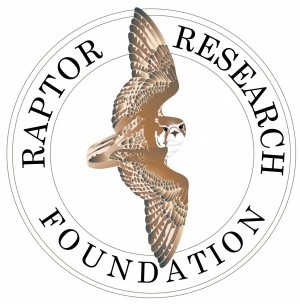Location
The Raptor Research Foundation (RRF) is a non-profit scientific society whose primary goal is the accumulation and dissemination of scientific information about raptors.
Following those horrific decades from the 1930s to the 1950s when most folks shot and poisoned raptors as “good-for-nothing chicken-hawks”, bird of prey populations were next subjected to a barrage of chemical abuses ranging from both the direct and indirect effects of pesticides and industrial by-products, e.g. organochlorines and organophosphates, polybrominated biphenyls, heavy metals and rodenticides. Unable to reproduce their numbers, several raptor species, e.g. peregrine falcons and bald eagles, teetered on the brink of extinction in the early 1970s. But it was not all bad news – there were also people out there who cared, i.e. falconers, academics, educators, rehabilitators, government biologists. And together, they organized an “army” to help birds of prey. That army today is called the Raptor Research Foundation (RRF).
Members:
Resources
Displaying 6 - 7 of 7Spatial Variation of Eurasian Eagle-Owl Diets in Wetland and Non-Wetland Habitats in West-Central Korea
The diet of the Eurasian Eagle-Owl (Bubo bubo) was studied in two different land-cover types: wetlands and non-wetlands. We analyzed 1458 prey items obtained from 924 pellets and 534 prey remains collected in 34 territories in west-central Korea. Diet composition differed significantly between the two habitats: diet was mainly birds (68.9% by number; 85.3% by biomass) in wetlands, but was dominated by mammals (38.7% by number; 64.7% by biomass) in non-wetlands.
Habitats of Suburban Barred Owls (Strix varia) and Red-Shouldered Hawks (Buteo lineatus) in Southwestern Ohio1
Little is known about the habitat and ecology of suburban Barred Owls (Strix varia), a species sometimes considered the nocturnal equivalent of Red-shouldered Hawks (Buteo lineatus). We compared nesting habitat of Barred Owls to that of Red-shouldered Hawks nesting in suburban and urban areas, in and near the city of Cincinnati, Ohio, to determine whether any features distinguished owl nest sites from hawk nest sites.


